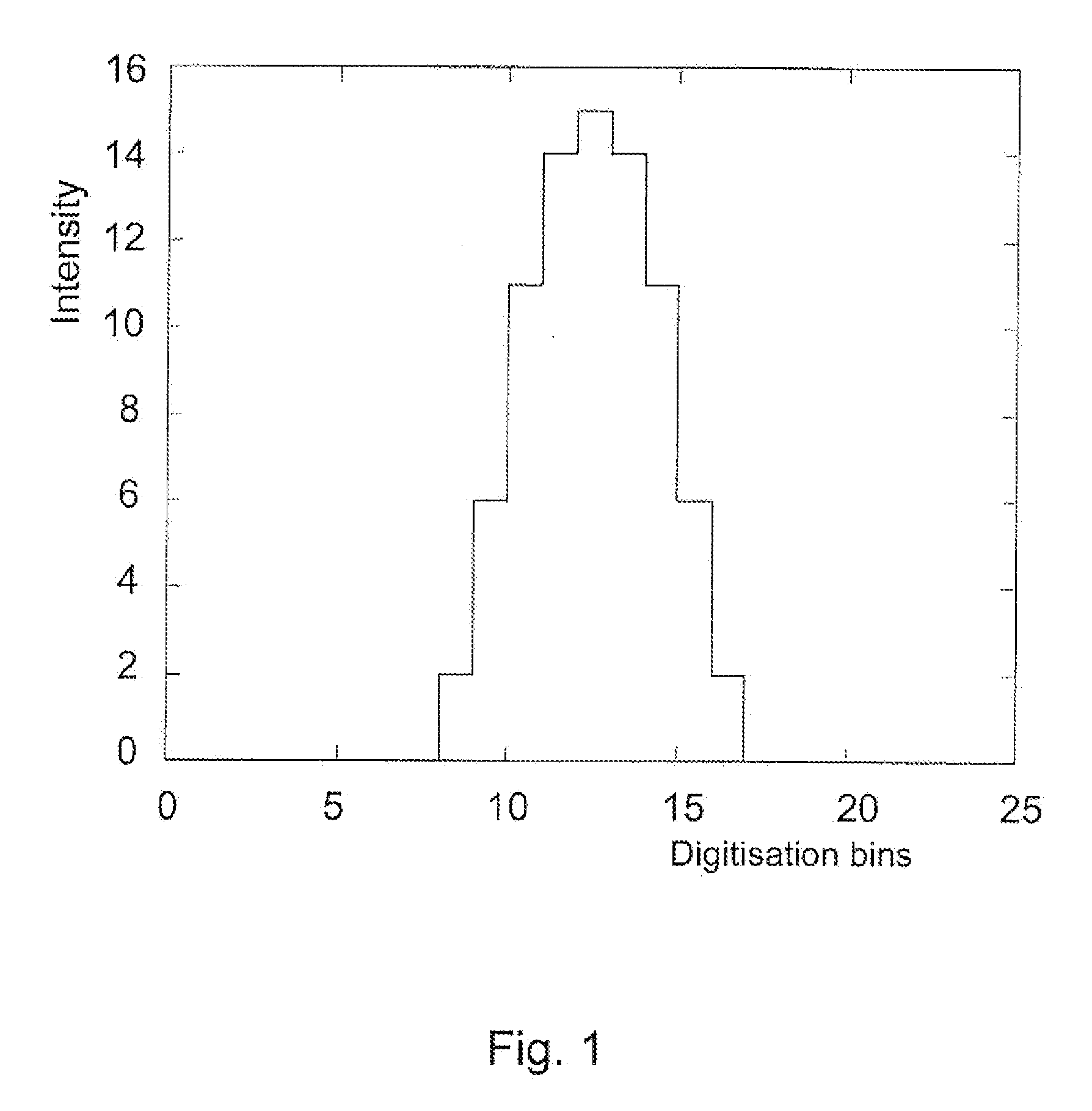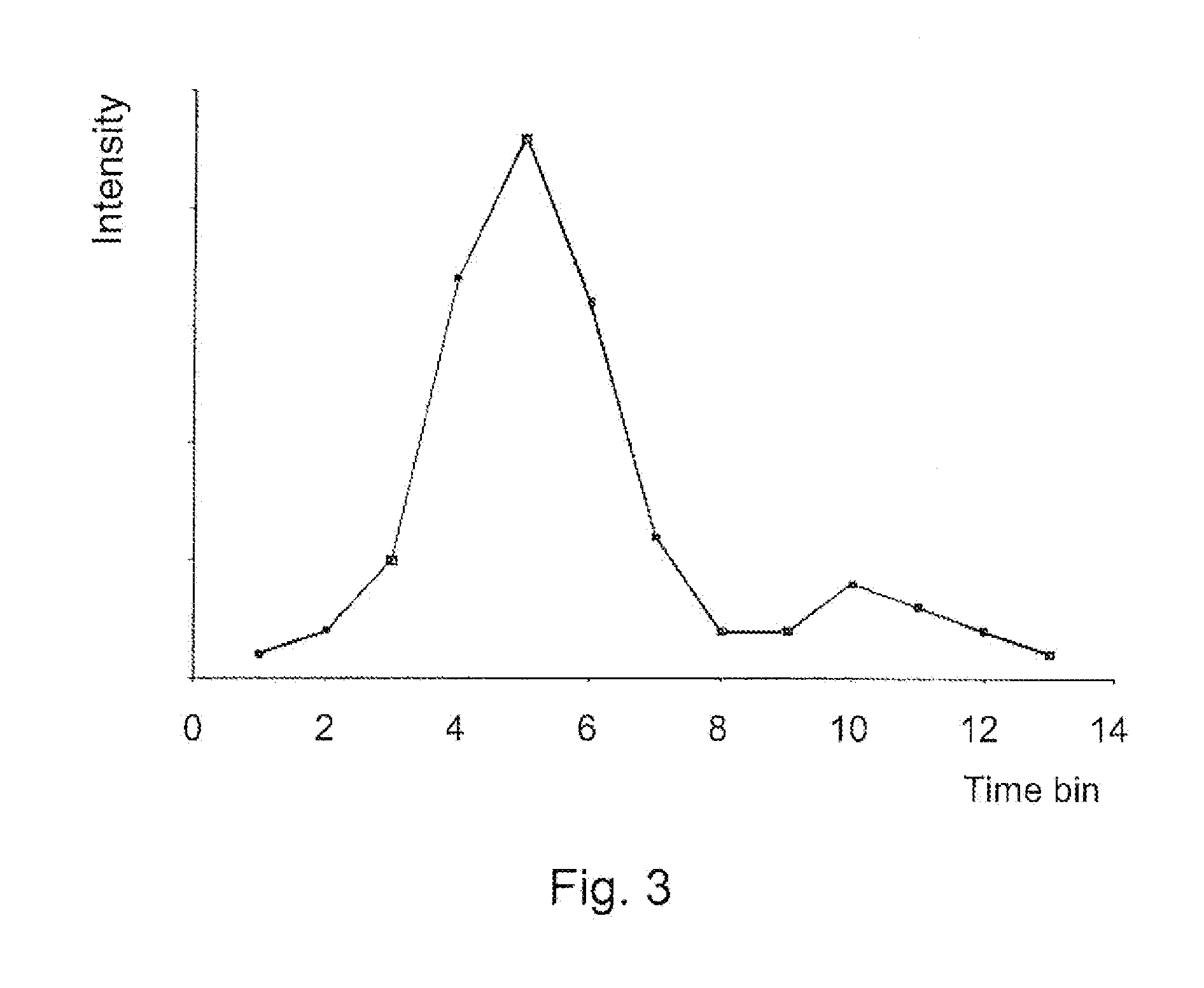Method of Mass Spectrometry and Mass Spectrometer Using Peak Deconvolution
a mass spectrometer and mass spectrometer technology, applied in mass spectrometers, particle separator tubes, isotope separation, etc., can solve the problems of significant time interval or dead-time, inability to distinguish between signals, and failure to record significant number of ion arrival events, etc., to achieve the effect of being easily implemented
- Summary
- Abstract
- Description
- Claims
- Application Information
AI Technical Summary
Benefits of technology
Problems solved by technology
Method used
Image
Examples
Embodiment Construction
[0151]A preferred embodiment of the present invention will now be described. According to a preferred embodiment a Time of Flight mass analyser is provided comprising an ion detector. The output from the ion detector from each time of flight analysis is preferably digitised by an Analogue to Digital Converter (“ADC”).
[0152]According to the preferred embodiment a de-convolution algorithm is applied to each time of flight spectrum and the de-convolution algorithm is adapted to employ only integer arithmetic. The method of de-convolution may be further extended to handle overlapping sources in this environment as will be described in more detail below.
[0153]According to an embodiment a fast Field Programmable Gate Array (“FPGA”) architecture may be used enabling de-convolution to be performed on individual time of flight spectra without loss of duty cycle. The integer arithmetic which is employed according to the preferred embodiment is particularly suited to analysing digitised signal...
PUM
 Login to View More
Login to View More Abstract
Description
Claims
Application Information
 Login to View More
Login to View More - R&D
- Intellectual Property
- Life Sciences
- Materials
- Tech Scout
- Unparalleled Data Quality
- Higher Quality Content
- 60% Fewer Hallucinations
Browse by: Latest US Patents, China's latest patents, Technical Efficacy Thesaurus, Application Domain, Technology Topic, Popular Technical Reports.
© 2025 PatSnap. All rights reserved.Legal|Privacy policy|Modern Slavery Act Transparency Statement|Sitemap|About US| Contact US: help@patsnap.com



